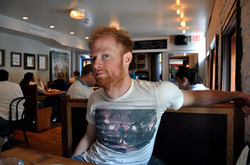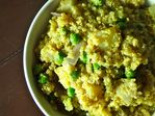1. What does "All Natural" mean?
2. Is vegitarianism or veganism a "healthier lifestyle?
3. Is organic a better option over locally grown foods?
4. How does a person know what foods are good and which are bad?
5. Can fast food be okay to eat in moderation?
6. Are fad diets safe?
7. Do grocery stores have healthy options?
8. How can someone eat healthy at college?
9. Are there cheap ways to eat healthy?
10.
In the first article called, "What is Oral History?", the main point of the article is that spoken word is important to the passing on of information in history. Oral history is exactly what it sounds like, history that is presented through speech and communication. It can be aqquired through story, through interview and through simple communication. "To summarize: oral history might be understood as a self-conscious, disciplined conversation between two people about some aspect of the past considered by them to be of historical significance and intentionally recorded for the record." According to the article, any form of communication can be considered oral history.
In the second reading called, "Conducting the interview", the idea of oral history is revisited. The idea of passing on information is presented through a biography. He interviews someone and writes about their entire life from hearing what they have to say about their experiences. However, he states that if you are not interested in whole lives you can try a character sketch, or a small experience in a person's life and interview them about this. In this case you are still hearing oral history, just a smaller part of it. Then he goes into describing the questoons he asked and how he formed them based on what he already knew about her. Then there is a section on "leading" questions which reminded me of a lawyer trying to get a specific answer out of a witness. The interview process is both formal and informal, but one must find the balance first.
Both of these reading informed me on the process of oral history and I
The fisrt article, "Situationg Narrative Inquiry" is an interesting article on reseach and how narrative has become a part of this reseach. "The four turns are a change in the relationship between the researcher and the researched; a move from the use of number toward the use of words as data; a change from a focus on the general and universal toward the local and specific; and
a widening in acceptance of alternative epistemologies or ways of knowing" (Clandinin). This articel explains how and why research has grown to involve this narritive. It begins with a descriotion of qualitative and quantitative research. Quantitiaitve invloves numbers and qualitiative involves surveys and words. The narrative inquiry involves this qualitiative research becasue of the interacton with humans instead of numbers. It is based more on interactions and behavious that statistics and numbers.
The article talks about the four turns to narrative inquiry starting with "relationships among participants". This is important becasue it involves the qualitative research. It is about the connection between the researcher and the researched. Understanding this mean that the researcher is no longer a untouched bystander, simple observing. "In turning, narrative inquirers recognize that the researcher and the researched in a particular study are in relationship with each other and that
both parties will learn and change in the encounter." (Pinnegar & Daynes). This changes the dynamic of observation becasue the researcher is now more involved in the research when it is in regards to people not simply putting numbers into a system. The second turn is "the move to words as data", making the reseach a narritive instead of a bar graph. "The turn from numbers to words as data is not a general rejection of numbers but a recognition that in translating experience to numeric codes researchers lose the nuances of experience and relationship in a particular setting that are of interest to those examining human experience." (Pinnegar & Daynes). This adds to the narritive or storytelling aspect becasue they need to know more than the number of things they, as researchers need to understand the thing they are observing. The third turn is "the focus on the particular" which is "when researchers make the turn toward a focus on the particular, it signals their understanding of the value of a particular experience, in a particular setting" (Pinnegar & Daynes). This means that the research is more than numbers its specific instances and people with specific lives etc. Lastly the fourth turn is "the recognition of blurred genres of knowing", which is the idea that there are different ways of experiencing things.
The second article, "Narrative Inquiry" is about this method of research and what narritivie inquierers do. Clandinin and Connelly discuss the three dimensional inquiry space. "We earlier created a metaphor of a three-dimensional space, in which narrative inquirers would find themselves, using a set of terms that pointed them backward and forward, inward and outward, and located them in place. We saw these dimensions as directions or avenues to be pursued in a narrative inquiry. " (Clandinin & Connelly).
This is when a researcher like Ming Fang and Micheal become involved in the history and culture of a project. Ming Fang's research was conducted by experience and her conclusion was based on this. "It was out of this duster of experiences and considerations that she articulated her thesis proposal, which she ultimately conceptualized in her completed dissertation abstract as "a study ofidentity formation and cuLtural transformation of three Chinese women teachers as they moved back and forth between Chinese an4 Canadiancultures" " (Clandinin & Connelly). The emersion in the cultures is what formed her research topic and thesis and the data collected surronded her. The research that she conducted is based on her personal experience of culture shock and the data is shown through narritive. "Throughout her narrative inquiry, she remains in her Canadian place while traveling back in time and place, in memory, to a China that no longer exists. The three-dimensional space in which her research is situated creates an ongoing sense of dislocation as she moves from a remembered past in one place to a present moment in another, all the while imaginatively constructing an identity for the future. " (Clandinin & Connelly).
The three dimension is the emersion in the places of interest an the experiences that are accuiered while there.



